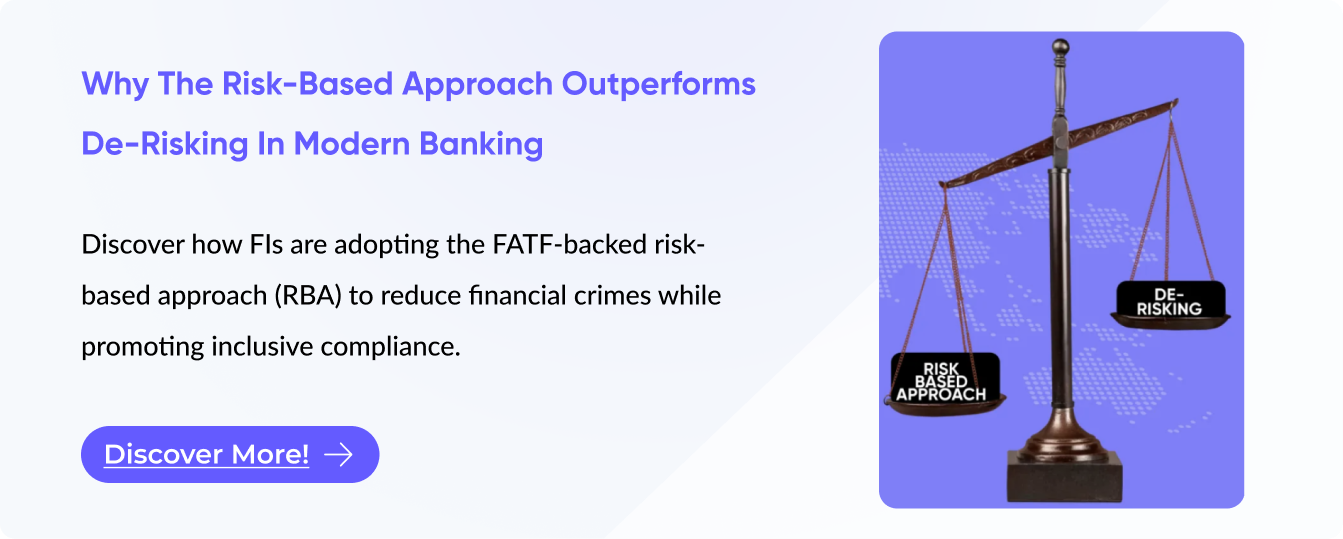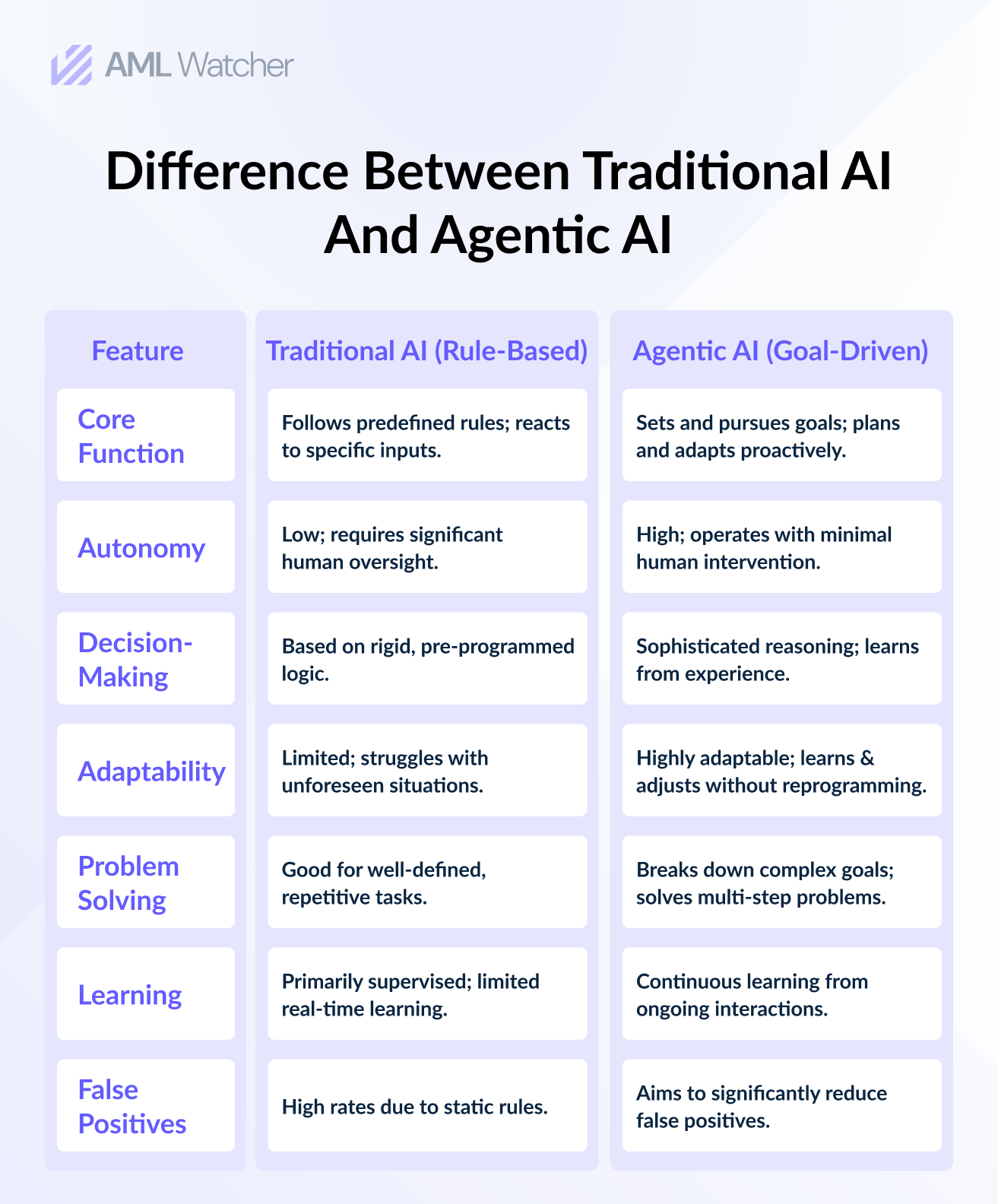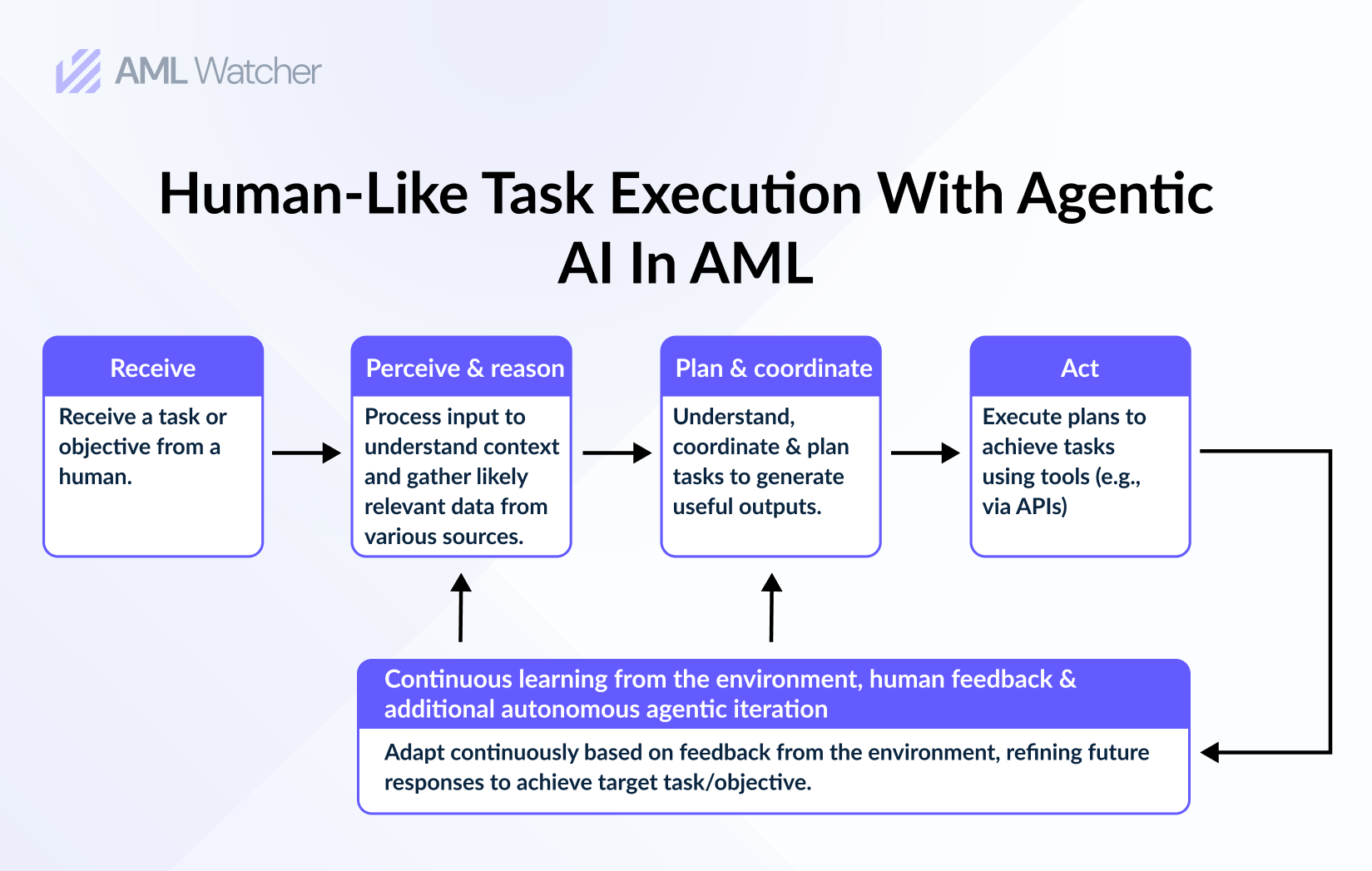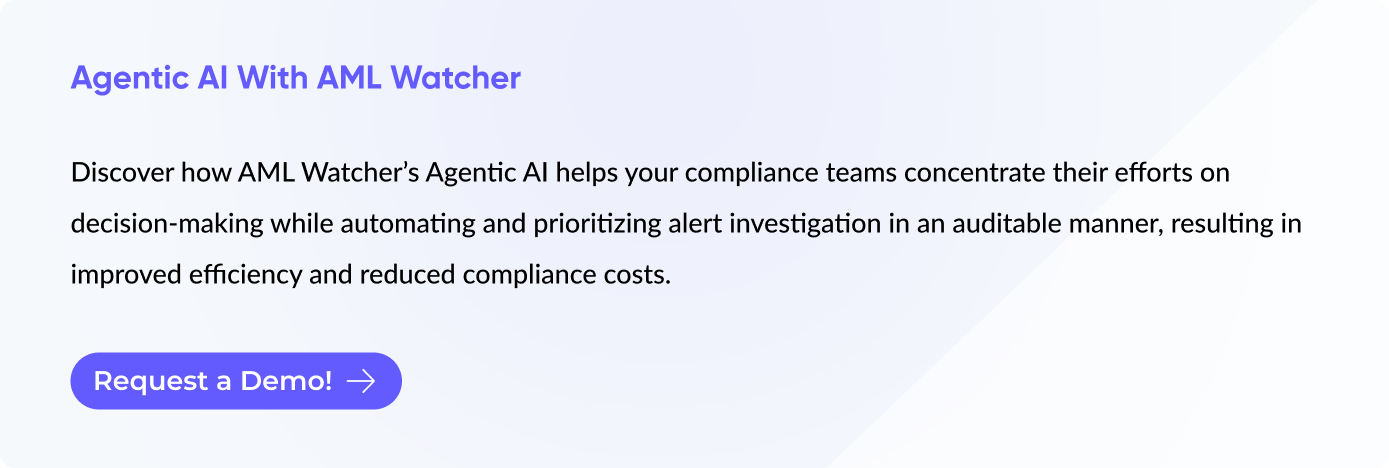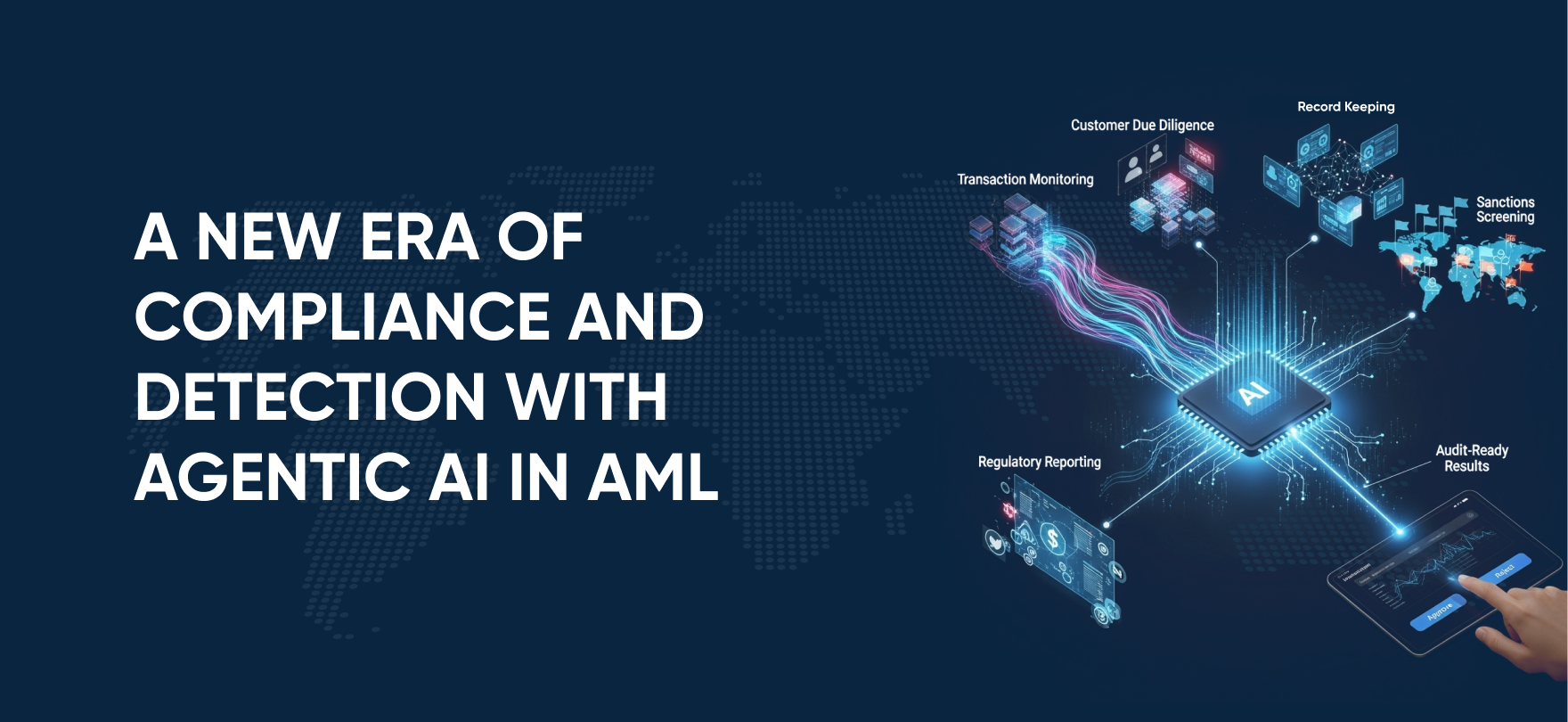
A New Era of Compliance and Detection with Agentic AI in AML
What if a compliance tool could think, learn, and act like a vigilant analyst? It autonomously put together an audit-ready SAR before your team even flags suspicious behavior.
This is the promise of Agentic AI. Unlike static systems that rely on pre-set rules, Agentic AI independently identifies risks, learns from real-time data, and makes informed decisions. It represents a fundamental shift from manual prompts to proactive compliance intelligence.
Learn how the advances in agentic AI have shifted the focus of financial institutions from static monitoring to ongoing intelligent screening without replacing the need for human oversight.
Why Traditional AML Systems Fall Short?
Legacy AML systems produce a massive number of false alerts that overwhelm compliance teams, creating delays in compliance workflow. This delay often frustrate the customer during onboarding and compel them to look for alternatives resulting in loss of customer trust and the potential business revenues.
According to media reports, upto 95% of false positive compliance teams receive whenever they encounter a high-risk entity or PEP alert. The reason he shares is the static, rule-based systems that generate a huge number of false positives.
It has become increasingly clear that traditional systems cannot keep up with the pace of technological advancement; therefore, many financial institutions are shifting towards AI. This shift, where the FIs are adopting risk-based models, is heavily encouraged by regulators like the Financial Action Task Force (FATF). The growing intricacy of regulations means firms are seeking solutions that efficiently reduce manual workloads and address evolving regulatory standards.
A recent survey by the Bank of England reveals that approximately 75% of companies already use artificial intelligence for AML compliance, and another 10% plan to do so within the coming 3 years. This rapid adoption, however, isn’t without hurdles, as its implementation is the biggest challenge for 74% of respondents, as described in the same survey. The reasons behind these challenges can be the inflexible and preliminary nature of traditional AI systems.
Overcoming these challenges requires understanding the crucial difference between traditional AI and advanced Agentic AI in AML. While Gen AI typically responds based on predefined prompts, Agentic AI works with contextual intelligence, integrates AML frameworks autonomously, learns from real-time data, and surfaces high-risk entities without demanding human interference. Agentic AI is not just automated; it understands what it’s doing.
Agentic AI Meaning in AML Compliance?
Agentic AI tools don’t stop at automating tasks; they act as a goal-driven agent that proactively screens transactions, external data, and customer profiles. This challenges the capabilities of static, rule-based systems by detecting the hidden risks that they often miss. It doesn’t just perform the task as per instructions, but it has the ability to make decisions on its own and then alert the compliance teams about the dangers coming their way.
For instance, instead of static fuzzy matching, Agentic AI can adapt the screening rules to identify the spelling variations in the names of sanctioned entities and Politically Exposed Persons (PEPs). After that, to create a complete audit trail for reporting to the regulators, Agentic AI cross-checks the findings against the latest adverse news.
When spotting money laundering typologies like trade-based money laundering, in which fake invoices, circular payments, and hidden connections are involved across various countries and accounts, Agentic AI automatically draws links and flags the suspicious entities. It spares the time of compliance teams by adjusting the screening depth or due diligence levels so that they can focus on the actual high-risk cases.
Key Challenges in the Contemporary AML Workflows
Despite ongoing technology investments, compliance teams still face deep-rooted operational issues:
-
Increased False Positives
Most of the alerts businesses receive are false positives because the rule-based systems are not effective in figuring out the high-risk entity.
-
Delayed Decision-Making Process
Fragmented and incomplete information about a case can cause a delay in the decision-making process.
-
Missed Anomalies
Traditional AML systems often ignore evolving risk patterns because of the outdated models, inflexible rules, and unreliable data.
-
Extensive Scrutiny
The enhanced regulatory pressure, especially from authorities like the Financial Action Task Force (FATF) and local central banks, demands more extensive documentation and audit readiness.
Implementing Agentic Intelligence in AML Operations
Though true autonomous agentic AI in AML is still emerging, advanced platforms are integrating its core principles, which include:
- Ensuring regulatory transparency with Explainable AI.
- Promising real-time data integration for enhanced onboarding, screening, and monitoring.
- Ensuring seamless autonomous alert prioritization and case generation.
Such systems connect the contemporary automated compliance to an advanced AI agent in AML.
Future of Agentic AI in AML
To achieve the aims of agentic AI, leading platforms are now implementing corresponding design principles. Such platforms:
- Integrate structured and unstructured data across various sources.
- Support multi-language translation for media signals, sanction rules, and local name formats.
- Implement machine learning models to generate explainable risk thresholds.
- Ensure audit-ready documentation for each decision.
These features are paving the way for autonomous compliance, making agentic workflows a reality.
Agentic AI in AML is an Enhancement, Not a Replacement
Agentic AI in AML doesn’t replace compliance analysts; it empowers them by:
- Immediate attention for real-time threats.
- Generating insightful case overviews
- Offering enhanced Due Diligence strategies
Financial institutions that use automated AML systems claim upto 95% reductions in false positives, resulting in higher quality SARs and faster processing within manual reviews.
What does AML Watcher’s Agentic AI in Action Mean for You?
Conventional compliance tools mostly struggle with high false positives, slow decision-making and delayed risk screenings. But what if your AML platform could think, learn, and act like your best compliance analyst at scale?
Here’s what you gain from AML Watcher’s Agentic AI:
- Lower Compliance Costs
Reduce screening expenses by up to 50% through efficient AI-led workflows. - Faster Case Resolutions
Prioritize real threats instantly with autonomous alert generation. - Fewer False Positives
Use semantic and contextual AI to screen smarter and flag only relevant matches. - Always-On Risk Monitoring
Get live alerts from 215+ sanction regimes and global data sources in real time.
Whether you’re a lean compliance team or a global institution, AML Watcher helps you move from manual fatigue to meaningful results.
Meet your AI compliance partner, faster screening, smarter risk detection, better compliance. For more details, visit AMLWatcher.
We are here to consult you
Switch to AML Watcher today and reduce your current AML cost by 50% - no questions asked.
- Find right product and pricing for your business
- Get your current solution provider audit & minimise your changeover risk
- Gain expert insights with quick response time to your queries
